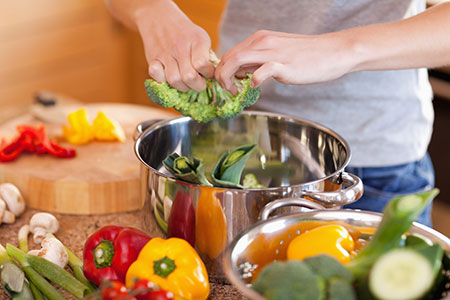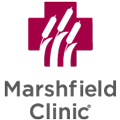What Can You Eat on a Whole Food Diet
A healthy living blog from Marshfield Clinic Health System
Home >Wellness > Clean eating: How to begin a whole foods diet
Clean eating: How to begin a whole foods diet
Mar 9, 2017 2017-03-09T07:00:42-06:00 2019-11-08T11:15:08-06:00 Wellness Tags:Clean eating series, Healthy eating, Nutrition, Whole foods meal plan

A whole foods diet, also known as clean eating, is based on legumes, nuts and seeds, whole grains, colorful fruits and a variety of vegetables.
Editor's note: This post is the first in a series with information to help you on the road to clean eating with a whole foods diet. Remaining posts in the series feature suggestions and recipes for each meal.
Brown rice, broccoli, strawberries and kidney beans – what do they have in common?
They are whole foods.
"When I think about whole foods, I'm thinking about foods mostly unchanged," said Shelly Wildenberg, a Marshfield Clinic registered dietitian. "In other words, they come as nature gave them to us. 'Don't eat anything your great-grandmother wouldn't recognize as food,' is how author Michael Pollan puts it."
Clean eating benefits
Key nutrients present in a whole foods diet help fight against nutritional deficiencies and chronic disease. Also referred to as "clean eating," this diet is based on legumes, nuts and seeds, whole grains, colorful fruits and a variety of vegetables that can reduce risk of:
- Diabetes
- Cancer
- Heart disease
- Arthritis
- Depression
- Alzheimer's
Unprocessed, whole foods retain the "good things," which may be removed when foods are processed. Whole foods often have higher levels of:
- Vitamins
- Minerals
- Antioxidants
- Good fats
- Fiber
- Phytochemicals
Tips to begin eating whole foods
"For starters, don't let yourself think you can't eat clean because you're too busy," she said.
Even with time constraints, you can begin whole foods eating. Start with these strategies:
- Buy bagged vegetables. Look for frozen vegetables that come in microwavable bags that only take a few minutes to heat. "It doesn't get much easier than that," Wildenberg said.
- Make use of nature's fast foods. Add nuts and seeds, fruits and vegetables to your everyday diet.
- Purchase pre-cuts. Find convenience in pre-cut fruits and vegetables, though slightly more expensive. Even fresh meats come with pre-cut options.
- Think simple. A clean meal can be as simple as a microwaveable frozen bag of vegetables, baked fish and roasted or steamed sweet potatoes.
- When baking swap sugar and fat for fruits and vegetables. Replace oils and sugars with mashed or pureed fruit and vegetables in baked goods. Try avocados, bananas, unsweetened applesauce, pears, dates or figs. Try this whole foods makeover of a cookie recipe.
Start fresh with new recipes
Shine365 has a handful of healthy recipes to help you get on the track to a whole foods diet.
Visit these websites for more recipe inspiration:
- American Institute of Cancer Research
- American Heart Association
- U.S. Department of Agriculture Mixing Bowl
More clean eating tips and recipes
Make a whole foods breakfast
Turn whole foods into fast meals
Whole foods dinner and eating out tips
About The Team

Wellness Team
Our team wants you to be in the best health you can be. We'll provide you with ideas for healthy living and ways to maintain balance, stay fit and take care of you and your family.
What Can You Eat on a Whole Food Diet
Source: https://shine365.marshfieldclinic.org/wellness/whole-foods-diet-tips/
0 Response to "What Can You Eat on a Whole Food Diet"
Post a Comment